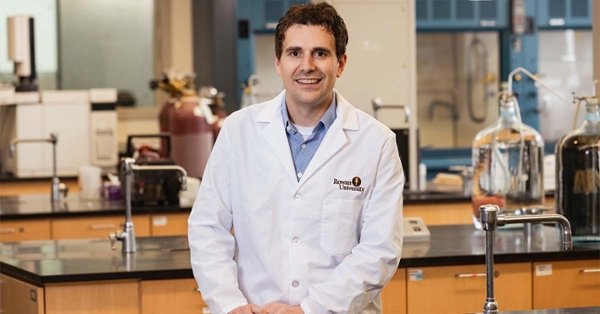U.S. Army funds development of a blood test for PTSD
U.S. Army funds development of a blood test for PTSD

James Grinias, Ph.D., a professor in the Department of Chemistry and Biochemistry in the College of Science & Mathematics, has received $356,993 in Small Business Technology Transfer funding from the U.S. Army to develop a portable system for detecting evidence of post-traumatic stress disorder (PTSD) within the blood of service members.
Grinias is collaborating with the technology company Luna Labs on the project; the team is responsible for creating and testing an instrument to analyze blood samples. Seven years of work at Rowan University, including Rowan students and collaborations with Axcend LLC, supports this contribution.
A psychiatric disorder, PTSD affects those who have had traumatic experiences, such as violence during combat. The debilitating symptoms, which can continue long afterward, include intense flashbacks, problems with mood and avoidance of triggers that bring the event to mind. Research has found that nearly 16 percent of veterans who were deployed to Iraq and Afghanistan are likely to have PTSD. In addition to the symptoms that accompany PTSD, changes occur in the body at the level of cells and molecules, some of which can be identified from within blood.
Health professionals can use these signs of PTSD, known as biomarkers, to catch cases of PTSD early and initiate treatment to prevent the condition from becoming more severe. However, conventional equipment for analyzing samples requires considerable space within an established lab and specialized training to operate. Grinias and Luna Labs plan to develop a much smaller, portable system for use in the field.
Their system, like existing instruments, would rely on two techniques. The first, liquid chromatography, separates the sample’s components, including the biomarkers, based on their interactions with a liquid solvent and a solid medium. Meanwhile the second, mass spectrometry, identifies these biomarkers based on their molecular mass.
Grinias’ lab has already created smaller versions of this technology for other uses, including within the pharmaceutical industry.
“These instruments are used for a million different purposes,” Grinias said. “Now, we’re adapting a miniaturized version for this clinical application.”
For this project, his lab is building a combined liquid chromatography and mass spectrometry machine approximately the size of a desktop laser printer, about 10 to 15 percent of the original’s size. Much of their effort will go toward developing a method for identifying several PTSD-specific biomarkers and then verifying that their approach works. Dylan Klein, Ph.D., an assistant professor in the Department of Health and Exercise Science in the Virtua Health College of Medicine & Life Sciences, will assist in this process.
Although not a formal part of its funding, the project also provides an opportunity for undergraduate and graduate students to gain experience with liquid chromatography and mass spectroscopy. Jobs in analytical chemistry require expertise in these techniques, however training is in short supply.
In turn, Grinias noted that over the years students have been responsible for demonstrating that miniaturized instruments function comparably to the full-size ones.
“Because of the hard work of these Rowan students, we have become one of the leading labs in this type of miniaturized technology. And so, we're getting the opportunity to work on challenging problems like this one,” Grinias said.
This material is based upon work supported by the Department of Defense (DoD) Small Business Technology Transfer (STTR) Program under Contract No. HT9425-24-C-0006. Any opinions, findings and conclusions or recommendations expressed in this material are those of the author(s) and do not necessarily reflect the views of the U.S. Army Medical Research and Development Command (USAMRDC).